The Right Way to Set a Table
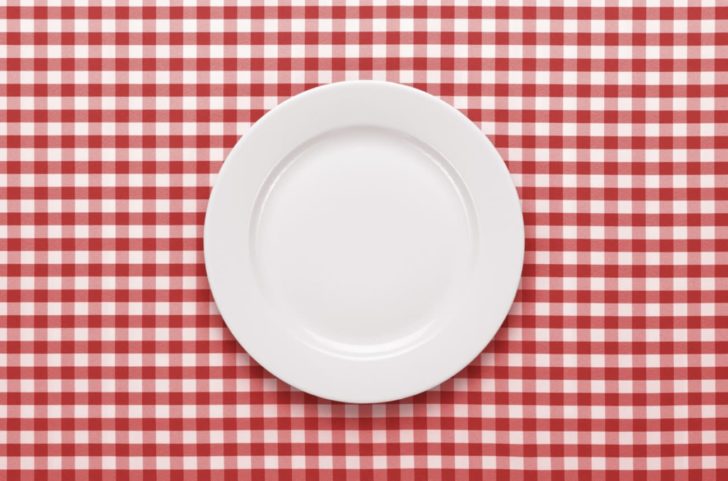
Setting the table correctly can be a little overwhelming. It can be hard to keep it all straight! Which way does the knife face? Does the water glass go on the left or the right? Does the spoon go by the fork or at the top? Luckily, once you’ve got them down, the rules aren’t really all that complicated. We’re here with some simple tools and tricks to help you remember it all.
While there are different rules for place settings when it comes to levels of formality, there are some basic tenets that always apply. They are:
Basic Setting

A basic table setting is what you would use for a casual dinner at home on an average weeknight. Not fussy, and pretty simple. The setting consists of:
Informal Setting
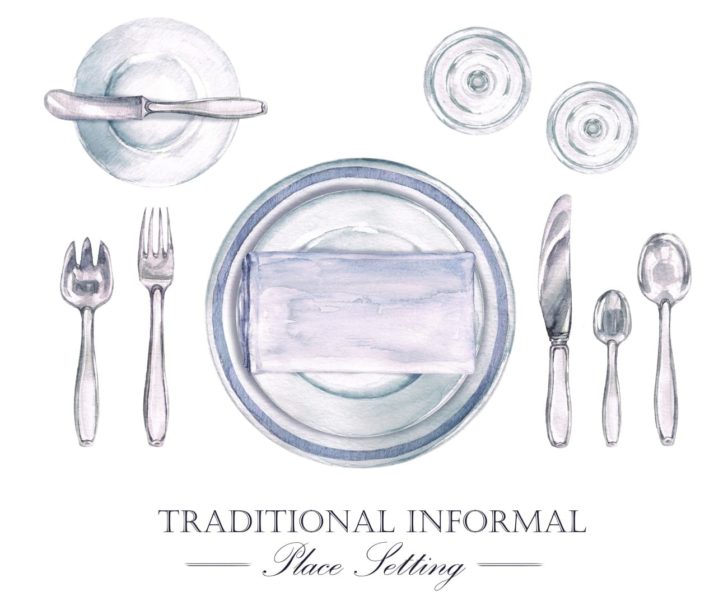
An informal place setting is used for a three-course meal, maybe when you’re having company over for dinner and the meal consists of soup, salad, an entree, and dessert.
In this case, you’ll have:
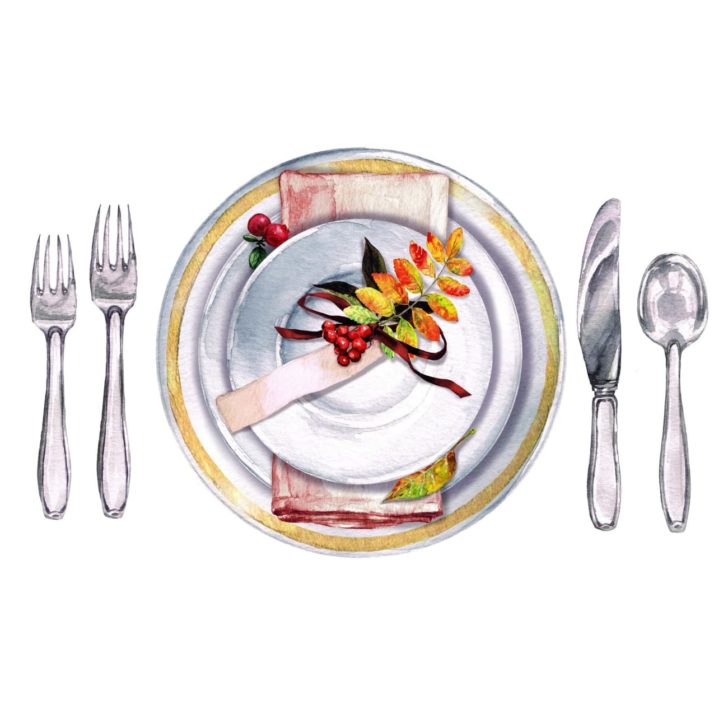
A dinner plate in the center with a napkin nicely folded on top.
Two forks to the left of the plate. They go in the order they’re used, from the outside in. So the smaller fork, the salad fork, would be on the far left. And the bigger fork, the dinner fork, would be closest to the plate. (If you’re serving salad after the main course, the order would be reversed: dinner fork on the outside and salad fork on the inside.)
The napkin can be folded on the center of the plate, but it can also be placed in a napkin ring to the left of the forks, or folded and placed underneath the forks.
The dinner knife always goes immediately to the right of the plate with the blade facing inward.
Spoons go on the right side of the knife, in order of use from the outside in. The number of spoons (if any), depends on what is being served. Assuming soup is served first, the soup spoon goes on the far right, and the teaspoon or dessert spoon go to the left of it and to the right of the knife.
If serving salad, the salad plate can go to the left of the forks. However, it’s totally acceptable to serve the salad directly on the dinner plate in this case.
A water glass, a wine glass, and perhaps a tea or coffee cup go above the knife and spoons, to the right of the plate.
A bread plate would sit at the top left of the plate, above the forks. A butter knife should sit across the edge of the plate with the blade facing down, handle on the right.
A good way to remember placement from Emily Post: hold your hands in front of you and give a “thumbs up” sign with each hand to form a ‘b’ with your left and a ‘d’ with your right. This is a good reminder that the bread and butter (for ‘b’) go on the left, while the drinks (for ‘d’) go on the right.
If using a dessert spoon and fork, they can either be placed beside the plate or set above the plate. If above, the spoon is set on top with its handle facing right and the fork is placed below with its handle facing left. If set beside the plate, the dessert fork would go to the left of the plate with the other forks, set closest to the plate because it will be used last, and the spoon would go on the right, between the knife and soup spoon.
Formal Setting
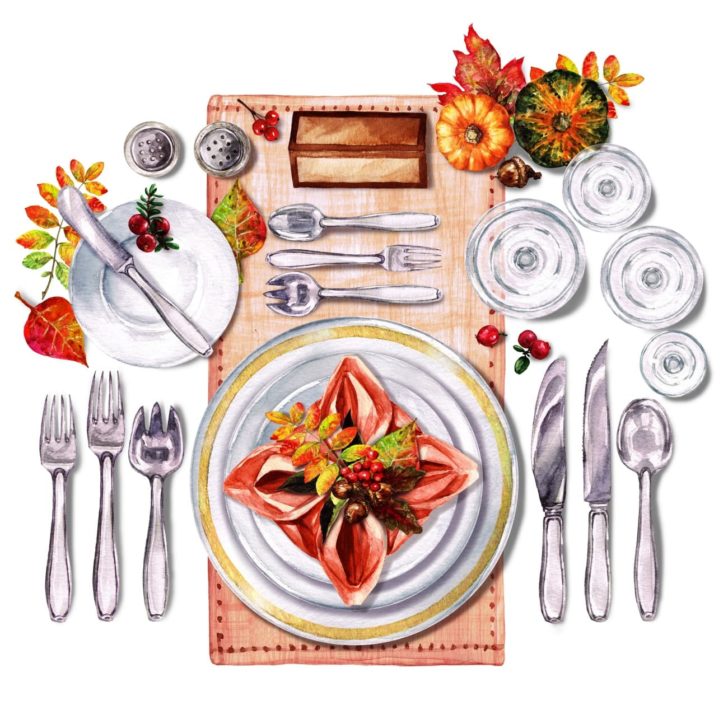
A formal place setting is used for a special occasion meal where you’re pulling out all the stops, like a holiday dinner or other meal with more than three courses. This is an occasion where place cards are used, candles are lit, and centerpieces are arranged. A formal setting is the same basic rules as an informal setting with added glasses, utensils, and plates to go along with the additional courses. (Which means it can end up taking up quite a bit of space…)
Some overarching rules:
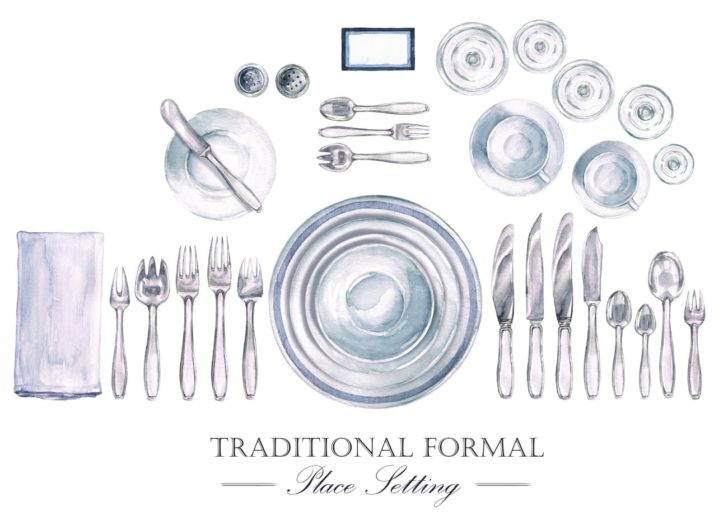
Though the illustration shows more for ease, no more than three of the same utensil should be placed out at the table, regardless of how many courses are served. The exception to this is if an oyster fork is used in addition to three other forks, then it would be placed to the right of the spoons. If more than three courses are served before dessert, any additional utensils needed would be brought out with the corresponding course. Likewise, dessert spoons and forks would be brought out on the dessert plate when that course is served.
As before, knives should be placed with blades facing in toward the plate.
Utensils, as always, are still placed in the order you’ll be using them from the outside in.
Let’s assume you’ll be serving a shellfish appetizer, then a soup, a fish course, and an entree, followed by a salad, and then dessert.
So there you have it! While formal settings can be kind of a doozy, the basic tenets for place settings remain the same. (And in any case, we bet your friends will be enjoying your company and cooking too much to critique your table!) Just remember these few tips and you’ll be good to go, no matter what the occasion:
© 2024 Great Life Publishing and GreaterGood. All rights reserved. Owned and operated by Great Life Publishing, a GreaterGood company. All charitable donations are paid by Greater Good Charities to benefiting organizations as a grant. Read our privacy policy. View information for advertisers (PDF).







